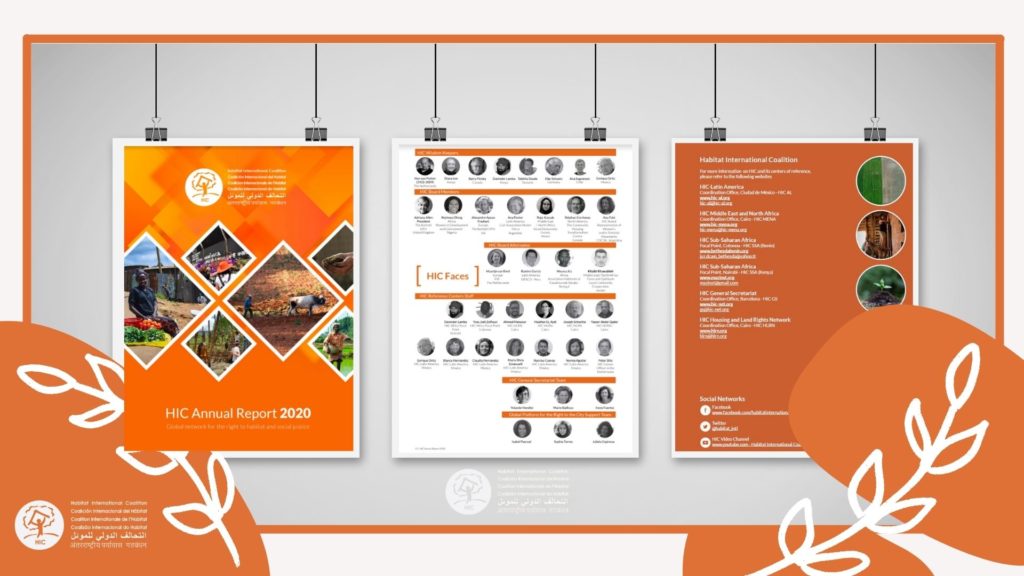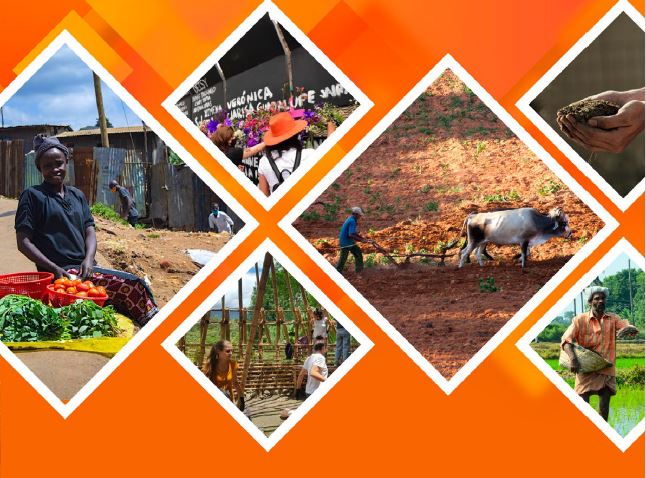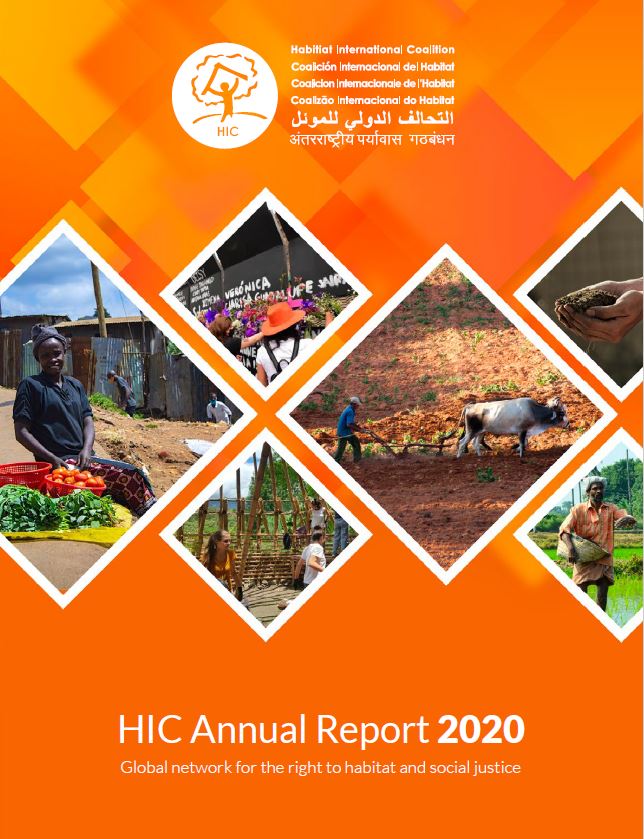This Annual Report gathers all the work from HIC Members and Allies, actively involved the defense of habitat rights in all continents: at the local, regional and global level.

 2020 was an extraordinarily challenging year, a year that changed the world and the way we work as a Coalition in multiple ways. When I joined the Coalition as President back in December 2019, I couldn’t have possibly imagined the challenges we were about to face. Almost overnight, we had to forge new ways of working together in defence of human rights related to habitat, to coalesce through our actions beyond the isolation imposed by lockdowns, social distancing measures and local restrictions. We had to generate new ways of communicating, of building social and political proximity under remote conditions. We had to find the energy to respond to the immediate effects, not just of the pandemic, but of the measures that imposed further hunger, lost livelihoods and deprivation, gender violence and racist discrimination, the non-sensical impositions to stay at home and handwash for millions of women and men without access to adequate housing, water, and sanitation. We had to do all this, while looking back and ahead to continue fighting against historical trajectories of deep and entrenched inequality.
2020 was an extraordinarily challenging year, a year that changed the world and the way we work as a Coalition in multiple ways. When I joined the Coalition as President back in December 2019, I couldn’t have possibly imagined the challenges we were about to face. Almost overnight, we had to forge new ways of working together in defence of human rights related to habitat, to coalesce through our actions beyond the isolation imposed by lockdowns, social distancing measures and local restrictions. We had to generate new ways of communicating, of building social and political proximity under remote conditions. We had to find the energy to respond to the immediate effects, not just of the pandemic, but of the measures that imposed further hunger, lost livelihoods and deprivation, gender violence and racist discrimination, the non-sensical impositions to stay at home and handwash for millions of women and men without access to adequate housing, water, and sanitation. We had to do all this, while looking back and ahead to continue fighting against historical trajectories of deep and entrenched inequality.
Among the many things we learnt throughout 2020 was that structural change in the aftermath of COVID19 would depend on grounded alliances and transformative actions. The pandemic has brought to the surface, not only the structural inequalities we face, but also the ‘endless’ reservoir of care, commitment and ingenuity of organised civil society, grassroots organisations and social movements, working in some contexts along with local governments. They were at the forefront in taking rapid and bold responses to this crisis. In most cases, they did so without adequate resources and at points even challenging indecisive, reluctant, and authoritarian governments.
Almost overnight, organised civil society mobilized all resources at hand and widened networks of in-kind support. Furthermore, we witnessed swift efforts to de-commodify access to adequate housing, food, health and basic services. This happened through measures such as: repurposing public buildings to provide shelter for the homeless, pausing evictions, introducing rent and service moratoriums, activating support lines to protect care workers, as well as women and children suffering domestic violence, building pop-up health facilities, food banks and communal kitchens, among many other measures that have made a huge difference for many.
We should not forget the enormous capacities displayed throughout the pandemic to do things differently: to protect lives and human rights related to habitat to an extent that seemed to be impossible before. The challenge now is to sustain and deepen the transformative actions unleashed throughout the COVID-19 crisis. This involves far more than ‘building back better’. We are not talking about bouncing back from a war or a devastating earthquake, but about bouncing forward from a health crisis that made evident the need to tackle long overdue challenges.
Civil society organisations are closer than any other actor to the felt needs for change on the ground. But they also need to be listened to, they need to be resourced and empowered to craft, drive, and sustain a transformative and integrated agenda. They need the full backing of local, subnational and national governments and the international community to turn this critical moment into a historical turning point, to really move forward to leave no one and nowhere behind. Such transformation can only be achieved under substantial redistributive measures and a deep recognition of the value of the life of everyone, regardless of their class, gender, sexuality, race, ethnicity, religion, age, or physical and mental ability. Actions need to speak to the reality of the poor, informal workers, racialized groups, migrants and refugees, indigenous peoples, the more than one billion people who live at risk of evictions, and, to a large extent, the women who live at the intersection of these multiple social identities.

